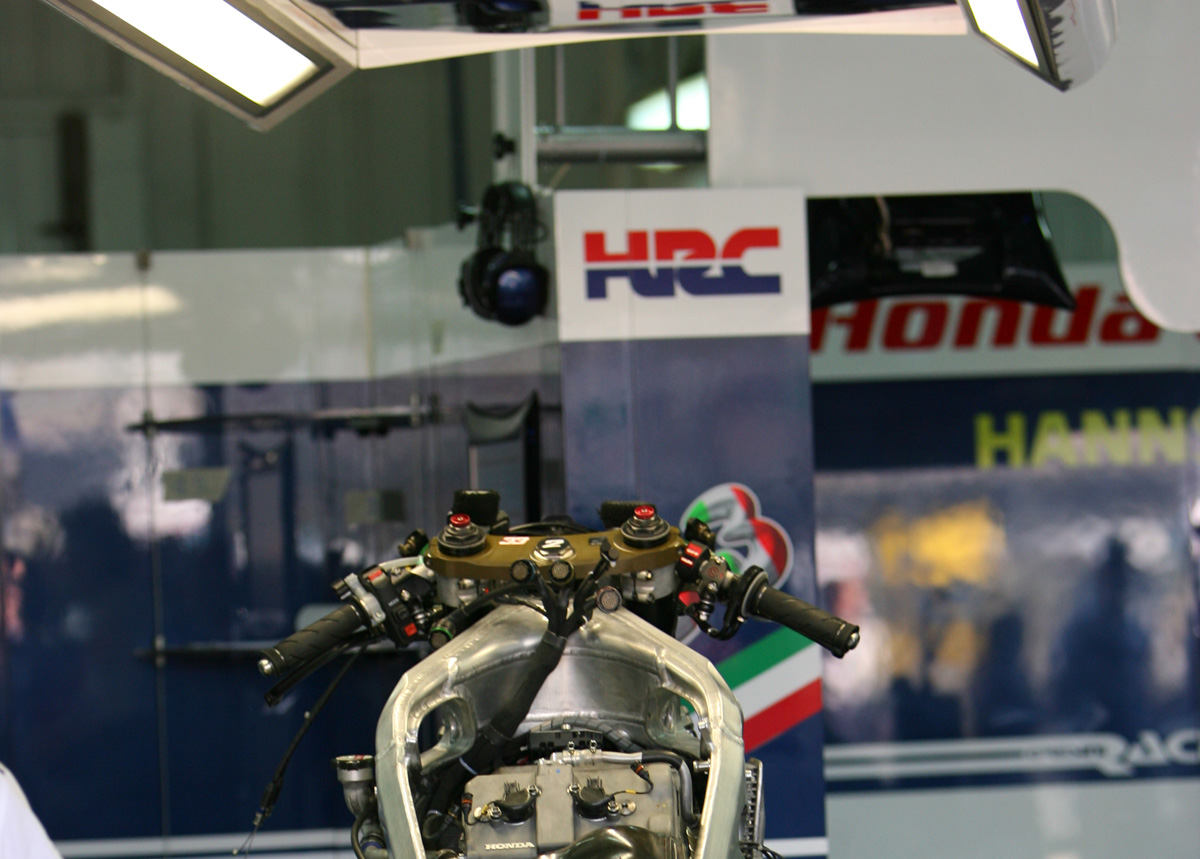If you ever have seen one of the newer GP Bikes

Intro Electronic English
What's still left to improve ? One thing is : Electronics.
If you ever have seen one of the newer GP Bikes 

it looks like they're already driven just by wires, at least , especially if you see a Desmosedici from a side view without fairings you've gotta hard Time trying to detect the Engine between all the wires and Boxes. Those guys won't add weight to their Bikes if it would not lead into a benefit somehow. Interestingly the fastest GP
Bike 2008 seemed to have the most electronic Devices , which may have to say nothing, but can mean something.
January 2008 Gary Inman, Editor of Performance Bike was here , and he had ridden the Moto-GP Ducati from Stoner , and reported, that this Bike was incredible easy to ride . Most Sensors mounted on GP or WSBK Bikes are obvious, but what they do, and what they're used for..... so which program and which table the values ( analog or digital
or frequency ) lead into - that's the Secret of each Team.
Welcome in the Age of Information.
When I'm on track ( In-between the Sessions working on my Data , in front of my Laptop.... which obviously looks cool .... ) I appear somehow know ledged to people, so I get faced with Questions sometimes :
" My Engine seems to be weak xy RPM range, what you think the prob may be ? "
" I'm always running wide accelerating out of a corner, do you think that's a Q of suspension ?"
" I've got lotta misfiring on the Brakes , do you think I'm running to lean at 0% TP ? "
.... and so on.
I do not have huge insight into everything, but what always helps to analyze Problems is - having Data.
So confronted with those Q's I normally reply, that I can give a rough estimation what the Problem might be, but the way faster and most accurate answer I could give ( as far as my knowledge goes ) if I would have Data ( of Suspension, Lambda, Pressures.. etc ).
Values from Sensors displayed on a Dash may help.
Those Values - if they're logged too - even more.
Those values - if they're used for active control of the Engine or even suspension (-valves) - even more.
But it maybe even a 6 blade Knife for people, who are no Data-Engineers : to route wires, to connect and to calibrate Sensors, to write tables for In- and Outputs, to determine their Influence in maybe Traction control or even drive-by-wire , and so on. In the end then they've got tons of Information by looging, which can be so
confusing, that for some it is as good as no Information.
So what's the point, which level of Sophistication with which features even helps the common not very skilled ( as me I:E:) Club- or Hobby racer ?
So, my point of view :
Engine:
To be able to see if the Engine is running at a perfect A/F ratio all TP's and RPM's , to see if the Engine-Tuner has done a good Job , a logging of the Lambda values is really helpful ( at 100Hz )
Suspension:
Linear Sensors on Fork and Shock are a Must, they can be just logged, and/or used for active Control of TC or valves etc.
Pressures:
Oil-Brake-Fuel-Clutchpressure recording can be helpful. Can uncover malfunctions, rider behavior, can be used for active controls.
Wheelspeeds:
Important. Measured both front and rear you're able to display the slip, even at downshifting you can see the tendency of Hopping of the rearwheel (negative slip). For TC a must anyways.
GPS:
In combination with sophisticated Software it allows the rider an Interpretation which chosen line is the fastest, can be used too for TC Settings